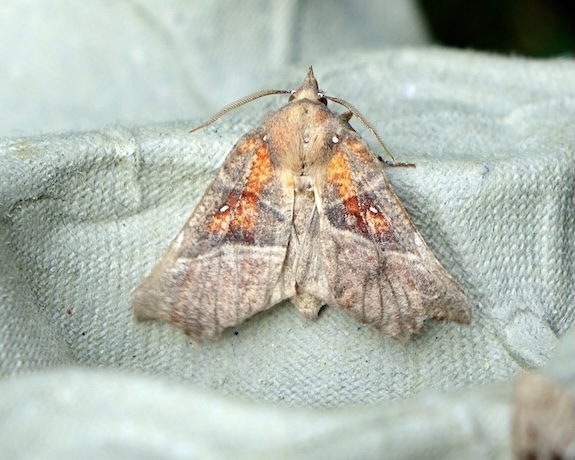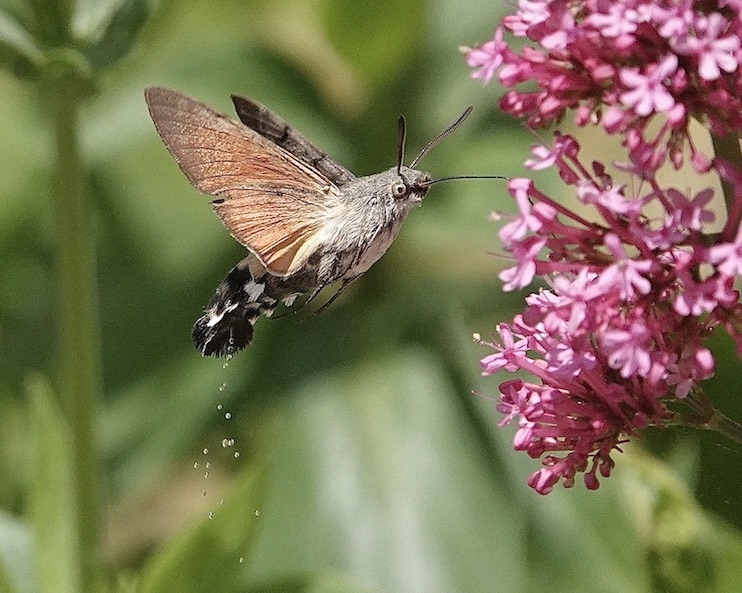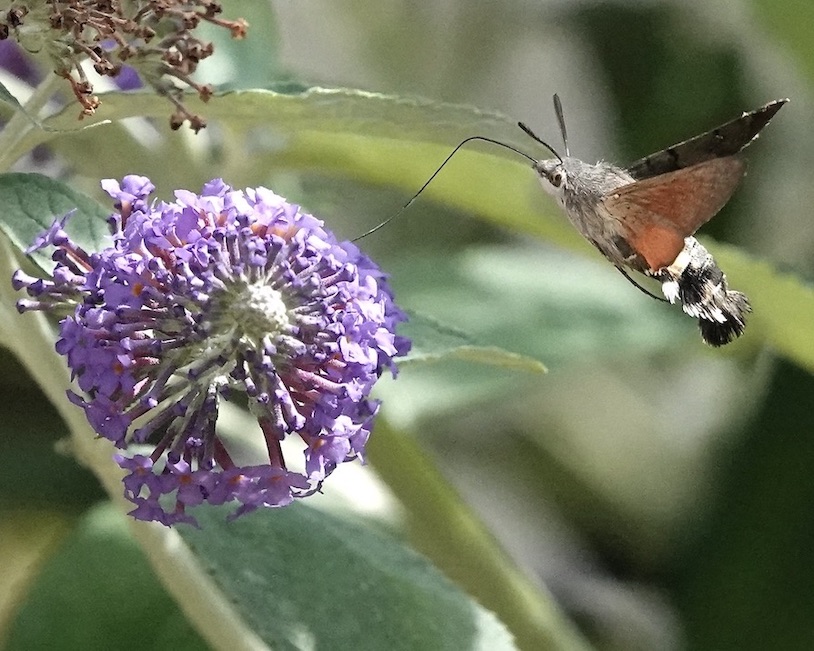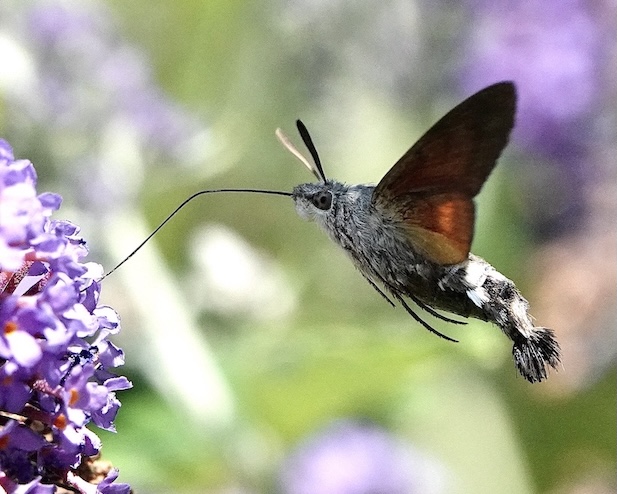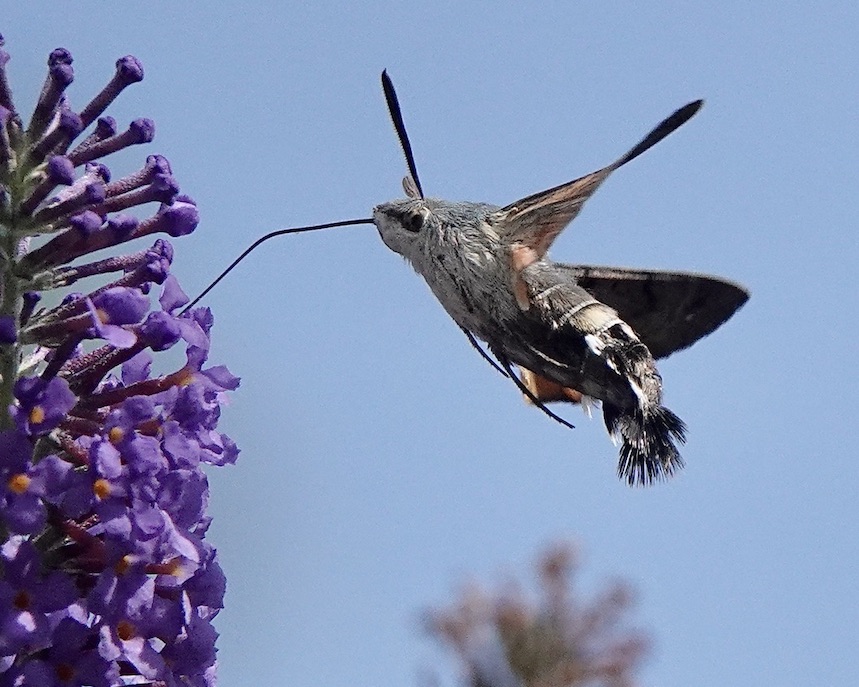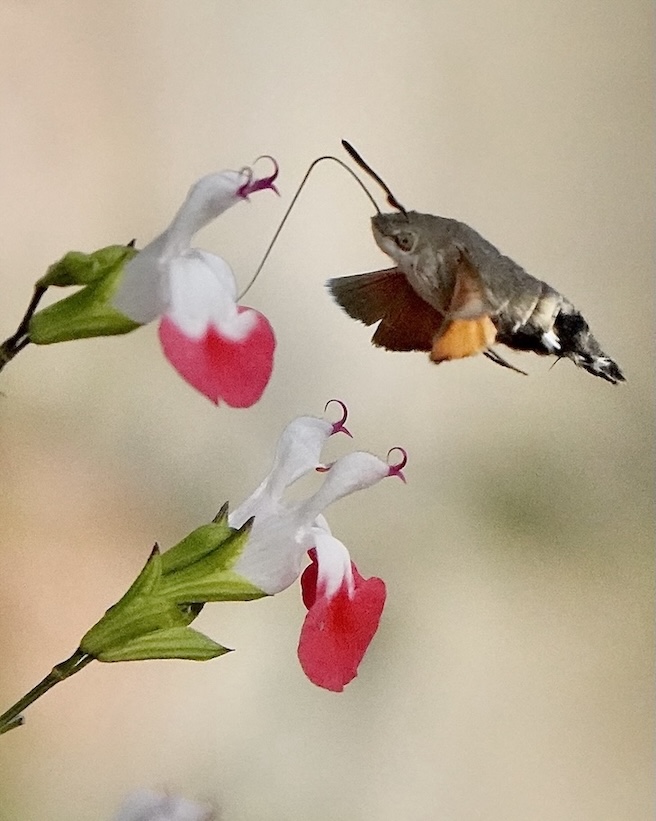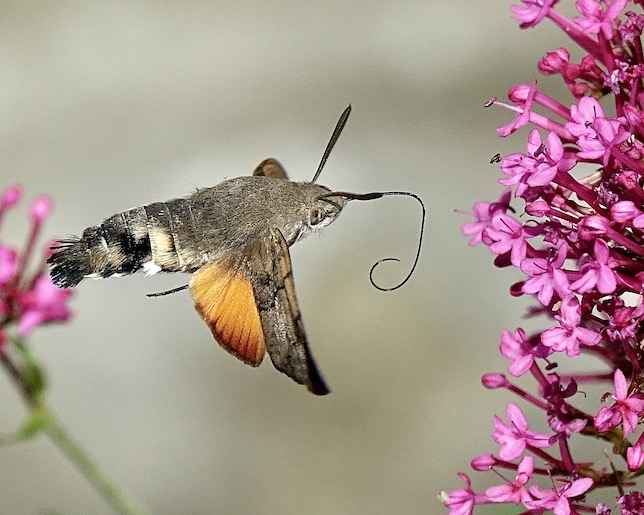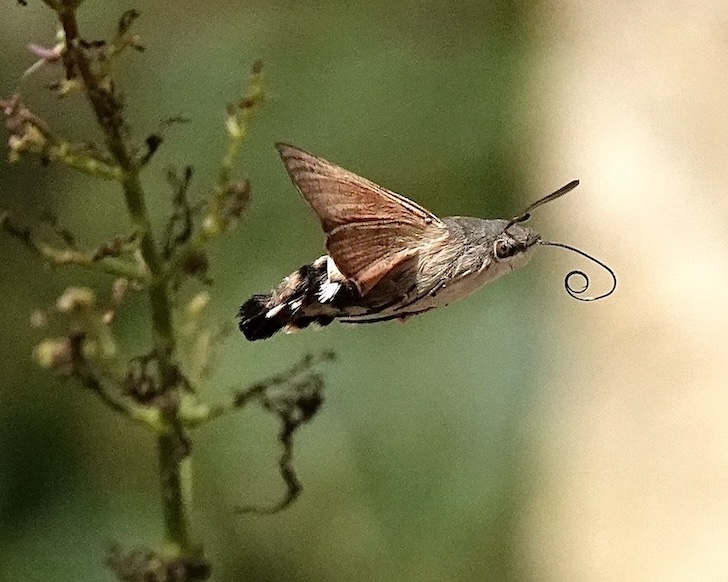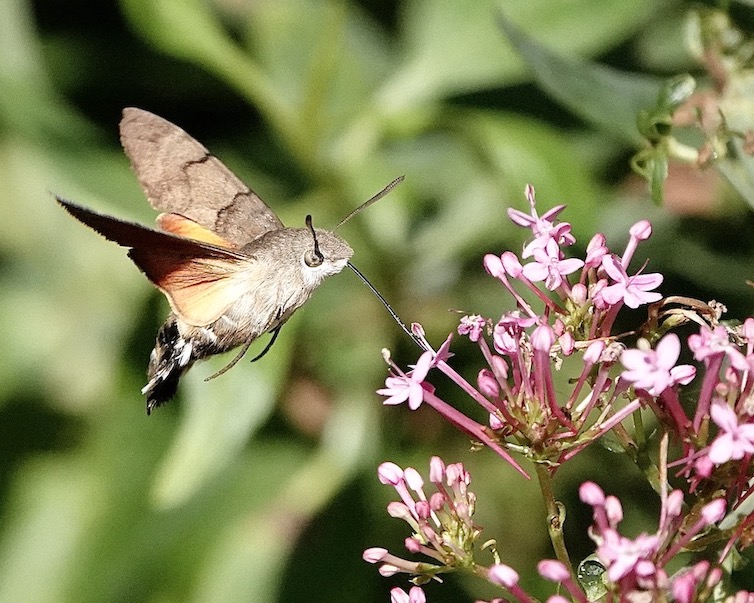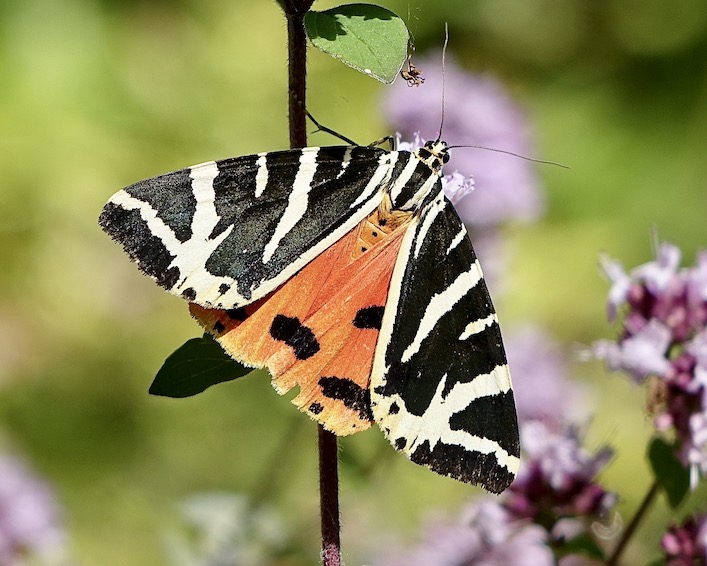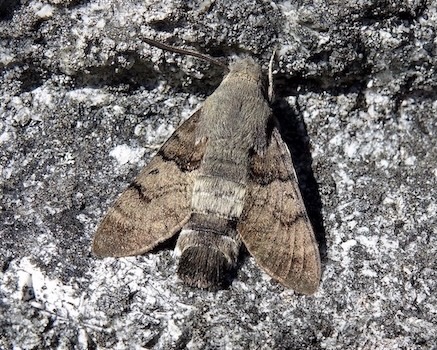 |
Not as stunning with its wings closed but a delight to watch when it flies. It hovers briefly but almost stationary in front of each flower
as it extracts nectar using its long proboscis. It has close physical similarities to hummingbirds.
A day-flying moth with a wing-span of just under 2 inches and wings that beat around 70 times a second, making an audible hum.
Harmless to humans and an excellent pollinator.
It can achieve speeds of up to 12 mph.
They are thought to live about 7 months.
Essentially a summer visitor to the UK, migrating from southern Europe but if mild enough it may over-winter.
Females lay eggs on species of bedstraw. The young pass from the larval stage to pupae before becoming adults.
Commonly known as the sphinx moth because when the larvae raise their heads the body stays flat, resembling the mythical sphinx in Egypt.
The adults drink nectar from flowers, typically honeysuckle, valerian, buddleia, lavender, nicotiana, jasmine etc.
Its proboscis uncoils as it feeds and allows it to take nectar from flowers that have a long corolla.
It will feed in most weathers, including rain.
The front wings are grey-brown, the rear are orange.
It is predated by bats, owls, spiders, rodents, birds of prey.
Male and female are very similar in both size and appearance.
It may be possible to differentiate them by looking for a pair of claspers near the end of the abdomen.
This is often obscured by hair, however. If the claspers are split it is probably a male.
If an ovipositor can be seen, it is female.
|













